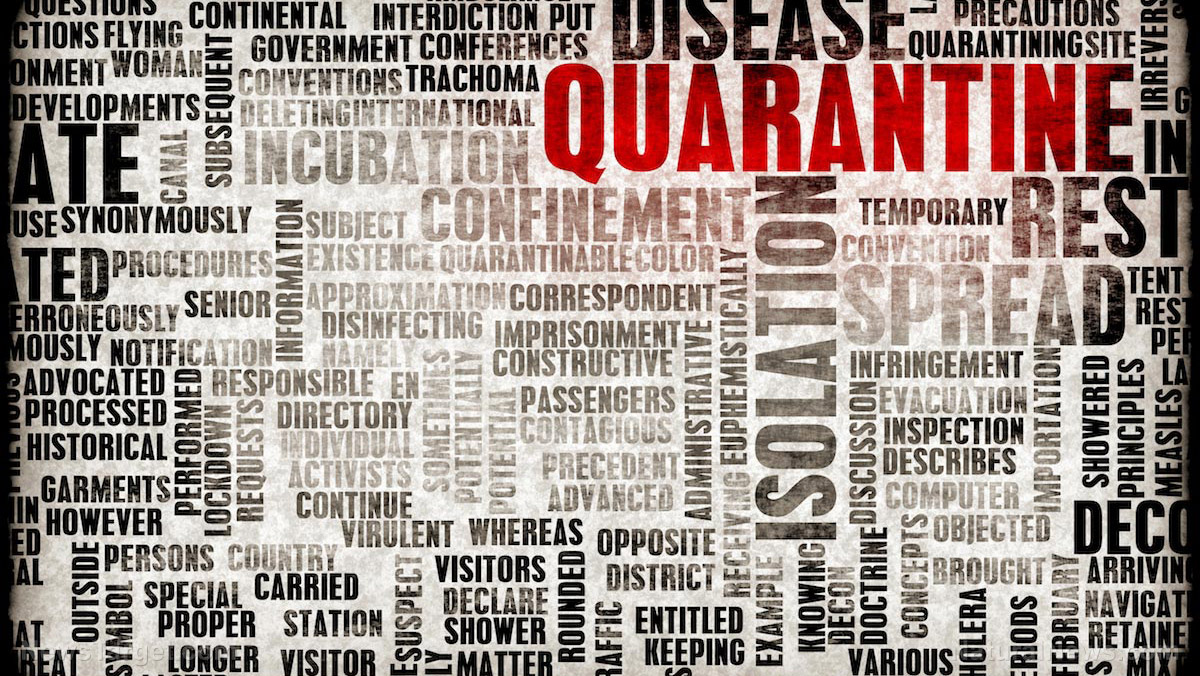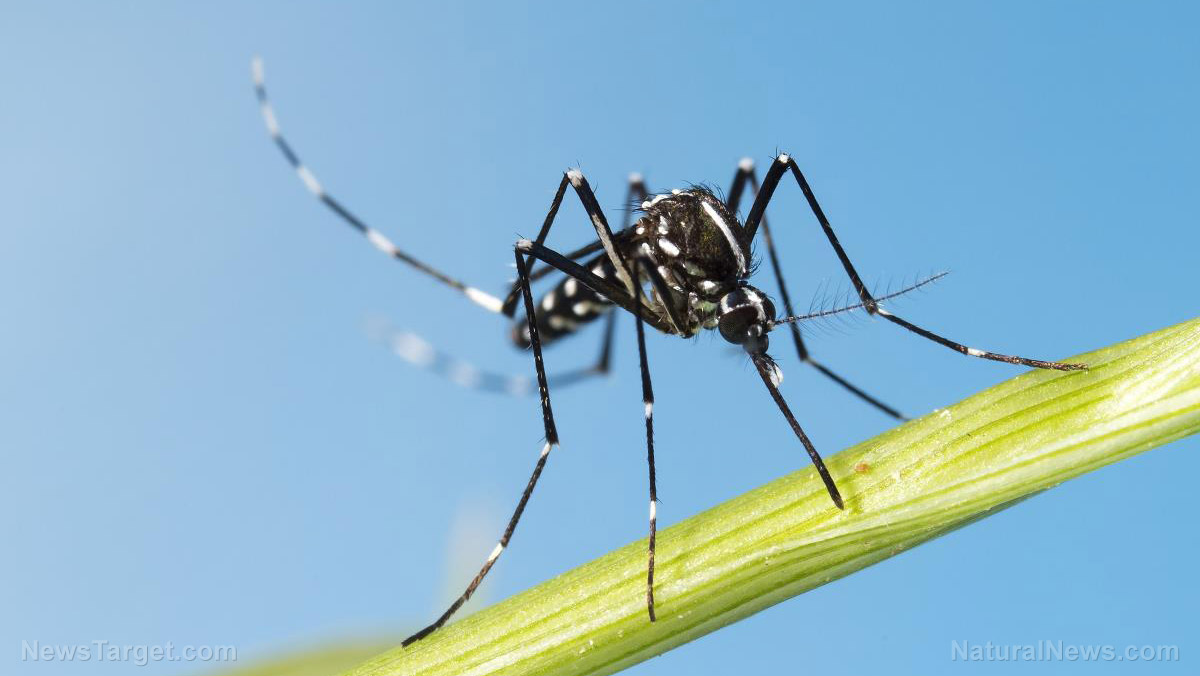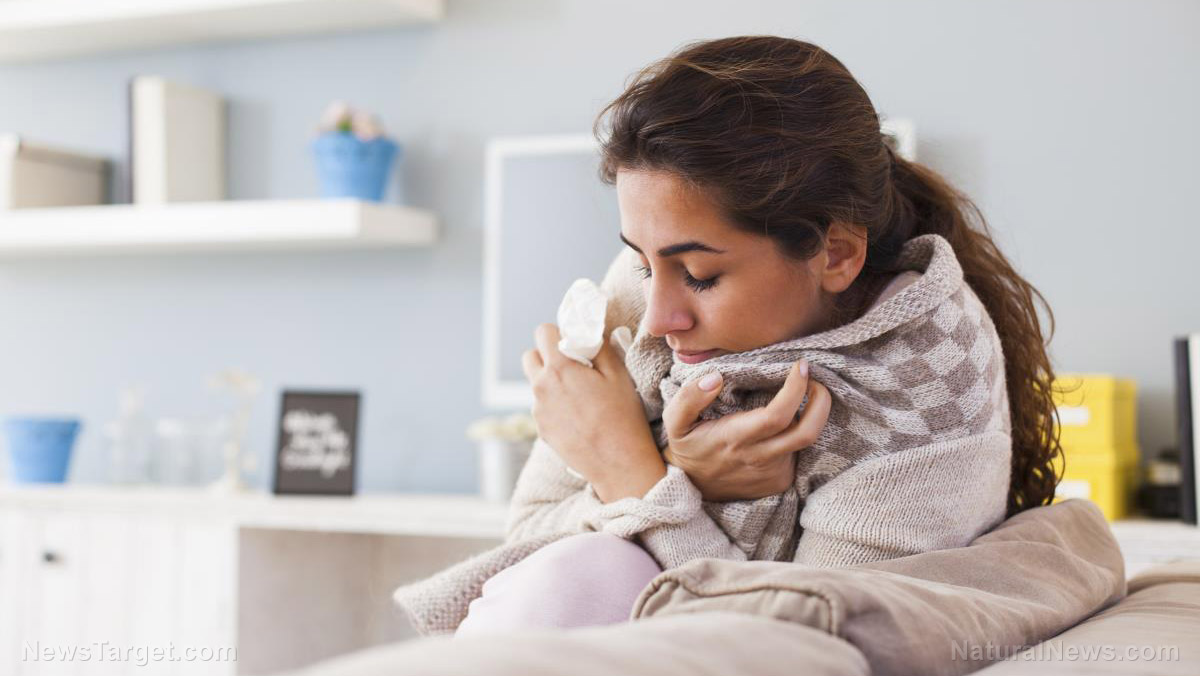Cleanliness can prevent bugs as well as germs: Bed bugs love dirty laundry, study finds
09/14/2018 / By Rhonda Johansson

Low-cost traveling has opened the doors to a lot of things, like bedbugs. So says Dr. William Hentley from the University of Sheffield’s Department of Animal and Plant Sciences and his team of researchers. His study, published in Scientific Reports, concluded that global bedbug dispersal has been facilitated by dirty laundry being left exposed in sleeping areas when traveling. Dr. Hentley saw that, compared to clean laundry, bed bugs gravitate towards dirty clothes, perhaps in an effort to find a suitable host to feed on.
To reach this conclusion, researchers conducted similar experiments using two identical, temperature-controlled rooms. In these set-ups, four traveling bags filled with clothes were placed in the presence of bed bugs. Two of the bags contained soiled clothes, the others had clean laundry. In each run of the research, one room was filled with a certain concentration of carbon dioxide to mimic human breathing.
Dr. Hentley and his team saw that in the room with more carbon dioxide, bedbugs were more likely to leave their nest to seek a host. Consequently, these pests were attracted to the residual human odor left on the soiled clothes. The team concluded that open suitcases filled with dirty clothes or laundry just left on the floor could attract bed bugs.
“Our study suggests that keeping dirty laundry in a sealed bag, particularly when staying in a hotel, could reduce the chances of people taking bed bugs home with them, which may reduce the spread of infestations,” said Dr. Hentley. “Bed bugs are a huge problem for hotel and homeowners, particularly in some of the world’s biggest and busiest cities. Once a room is infested with bed bugs, they can be very difficult to get rid of, which can result in people having to dispose of clothes and furniture that can be really costly.”
States that have been the most affected
Pest control company Orkin recently released its Top 50 Bed Bug Cities list. This list was based on the number of bed bug treatments performed from December 1, 2015 to November 30, 2016. This included both commercial and residential treatments. According to Orkin, the worst infected state is Maryland, followed closely by Illinois, New York, and Ohio.
The least infected states are Oregon, Nevada, Hawaii, Utah, and Florida.
Regardless, Orkin Entomologist and Director of Technical Services Ron Harrison, Ph.D., said that all states have experienced a dramatic increase in bed bug cases.
“They were virtually unheard of in the U.S. 10 years ago,” he said.
The National Pest Management Association claims that almost all of their pest professionals nationwide have seen a upsurge in the number of bed bug cases being reported and treated for in the last five years. This trend is only expected to continue as more people travel and practice questionable cleaning habits.
Bed bugs are a particular nuisance, spokespeople from the association say. This is because the pests are relatively small and can survive up to a year without feeding. They can grow to the size of an apple seed when fully grown and like to hide in the seams of mattresses, behind headboards, and around cracks and crevices, typically around a five-foot radius of the bed. Severe bed bug infestations can be detected by the small dark stains the bed bugs leave behind. This can be both their scat or blood spilled from the feeding site.
Bed bug bites are not dangerous but can be extremely itchy and painful. These pests tend to feed in a straight line, so look for numerous bites done in that pattern.
What you can do to prevent an infestation
There are simple ways to reduce the risk of bringing bed bugs back home when traveling. Pest control experts recommend the S.L.E.E.P. method. (Related: 7 Simple and Natural Ways To Get Rid Of Bed Bugs.)
- Survey — Travelers should look at their hotel rooms for any signs of infestation. This includes black or brown spots on any furniture.
- Lift — Look for the pests in their favorite hiding places. Lift mattresses, box springs, bedskirts, or any other furniture where they might dwell.
- Elevate — If you can, elevate luggage away from the bed and wall. Pest control experts recommend placing them in the bathroom.
- Examine — Remember to look at your luggage while repacking.
- Place — Soiled clothes should be placed in a sealed bag to prevent attracting bed bugs.
When at home, remember to regularly change your sheets and decrease the clutter around your home. This makes inspection and detection far easier.
Sources include:
Tagged Under: bed bugs, cleanliness, environment, hygiene, infestation, insects, low cost traveling, outbreak, pest control, pests, prevention, Public Health, safe travels



















